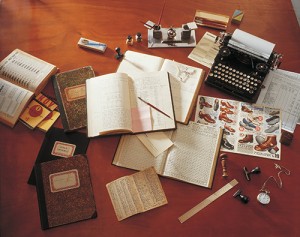 There seems to be a resurgence of interest in history, particularly personal history and genealogy. Popular television shows such as “Finding Your Roots” and “Who Do You Think You Are” explore ancestry. Ancestry.com and similar websites provide a platform for discovering your lineage. I wonder if part of this interest is because we now have technologies that help us discover who we are and where we come from.
There seems to be a resurgence of interest in history, particularly personal history and genealogy. Popular television shows such as “Finding Your Roots” and “Who Do You Think You Are” explore ancestry. Ancestry.com and similar websites provide a platform for discovering your lineage. I wonder if part of this interest is because we now have technologies that help us discover who we are and where we come from.
Document Scanning
The ability to scan and catalogue large numbers of documents has been a boon to genealogy research. We can mine the data from those documents to connect family lines. However, old documents are not always easy to read or access. A recent report from MIT highlights work that allows us to read fragile texts that cannot be touched or opened. Researchers are using terahertz radiation scanning and character recognition software to scan multiple pages at once. So far they are able to read through nine pages at once but hope to soon read through a whole book. This might someday enable us to read through ancient papyrus. They could one day unlock the information that links you to Cleopatra.
DNA Testing
Advances in DNA analysis have led more people to seek out testing, which adds more people to databases, which increases your chances of making family connections. Ancestry.com, mentioned above, sells a DNA collection kit for $99. Return a DNA sample and they will test it, add the information to their database and return the analysis that shows your ethnic mix and identifies possible relatives based on a match of DNA markers. This can be eye opening for people who do not know a lot about their past.
Record Matching
Advances in data analysis have improved the ability to match old documents in order to construct a family tree. Birth, marriage, death, and burial registries contain many errors that make them hard to reconcile. The town clerk in 1895 may have misspelled a name or recorded a date incorrectly so that it doesn’t match other official records. With modern data analysis, we can compensate for those errors and develop a “best guess” match for such records. Myheritage.com has proprietary matching algorithms that increase the chance of a correct records match.
Translation Software
Many of us do not speak the language of our ancestors, so when looking for records, we need translation. Researchers and technologists are developing applications able to translate names and other information from one language to another. Myheritage.com offers what they call “Global Name Translation” that breaks down the barrier of language. They describe this recent breakthrough in a press release in their blog:
“The new technology will now accept searches in English, automatically increase their scope to cover Russian and Ukrainian as well, and conveniently translate all results back to English.”
Such technology opens up a lot of possibilities that were once closed but can now help link family trees from different countries and cultures.
Thoughts
Technology can help bring people together and can aid our search for who we are and where we come from. It might even turn up a surprising connections to long lost family members. Have you used genealogy tools? Did they work? Let me know your experiences.
Kelly Brown is an IT professional and assistant professor of practice for the UO Applied Information Management Master’s Degree Program. He writes about IT and business topics that keep him up at night.

